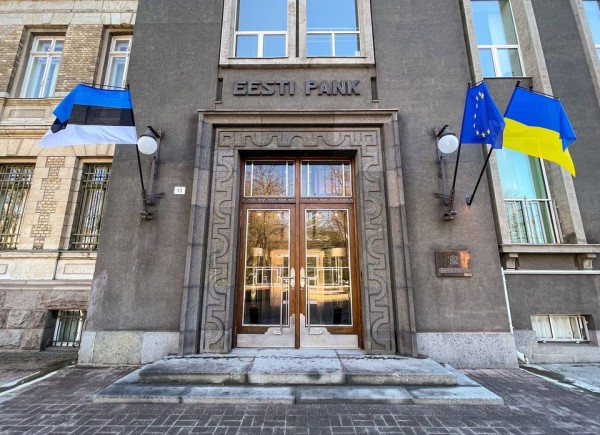
The year now ending has proved harder than expected for the Estonian economy, and the recession will last longer than was earlier predicted. Opportunities for sales by companies in the domestic market have been limited by people feeling uncertain about the future, which has led them to spend less and save more. Sales in foreign markets have meanwhile been constrained by the key markets for Estonian exports performing more poorly than the European economy as a whole, and by the exchange rate appreciating against the Nordic countries. A major role has been played by production costs rising, while the war in Ukraine has snapped several earlier supply chains, and business models have become redundant. Uncertain times and high interest rates have not favoured new investment. Overall the Estonian economy will have shrunk for the second year in a row this year, and the decline is expected to be of 3.5%. The economy is expected to shrink a little further in 2024 as well, by 0.4%, as demand for goods and services will start to pick up only slowly in both the domestic and foreign markets. Faster growth of close to 3% may be expected in 2025 and 2026.
The impact of the recession will be increasingly felt in the labour market. Companies have so far tried to avoid cutting jobs, and so total employment has remained at its highest ever level for two years despite the downturn in the economy. They have been able to hold onto employees because of the expectation of an imminent revival in the economy and because real wages have fallen, making labour cheaper for employers. The large fall in productivity indicates though that staff are underemployed, and increasing pessimism about the near-term outlook is causing unemployment to rise, and it will peak at 9% in 2024.
Advertisement / Reklaam
Advertisement / Reklaam
The labour market cooling will restrain the growth in wages. Reduced demand for labour and lower inflation will help apply the brakes. The collective wage agreements that have already been signed in the public sector together with the rise in the national minimum wage to 820 euros will make it harder for wages to adapt in full to the weaker economic climate in 2024. The average wage will rise by 6.6% in 2024, and the growth in it will then slow to close to 5% in subsequent years. The increase of more than 13% in the minimum wage next year will probably be too much for some companies with low productivity and lower wage levels, and some of the rise in unemployment will be a consequence of the rise in the minimum wage.The purchasing power of people will continue to improve. The purchasing power of the average wage has recovered half of what it lost during a little over a year, but recovering the other half will take longer, as wages will rise more slowly in future even as inflation is lower. Purchasing power will probably return in 2025 to where it was before the sharp rise in the cost of living.
Inflation will continue to slow. The cost of the consumer basket has seen no major change for more than half a year, and the current figure of 4-5% for inflation is a consequence of the low reference base from a year ago. The price level will be lifted next year by the rise in VAT and excises, and the consumer basket will become 3.4% more expensive. Inflation will remain a little above 2% in 2025-2026. Inflation will be slowed by the weakness of economic activity, and buffers in some sectors are sufficient that cheaper energy and commodities, and narrower profit margins will allow prices to be lowered.
It will be increasingly difficult to compile the state budget. Support from fiscal policy to underpin the economy would be appropriate in the coming years when the economic cycle is weaker than usual. The budget is however already in a persistent deficit because of decisions taken earlier, and adding additional stimulus on top of that will deepen the deficit, increasing the state debt and the interest burden even faster. A possible conflict between the domestic and European Union fiscal rules may also make this harder. Growth in tax revenues will very probably be less than what was earlier forecast, and so there is increasing pressure to restrain the growth in expenditures or find new sources of revenues to prevent the debt spiral becoming steeper.
Advertisement / Reklaam
Advertisement / Reklaam

